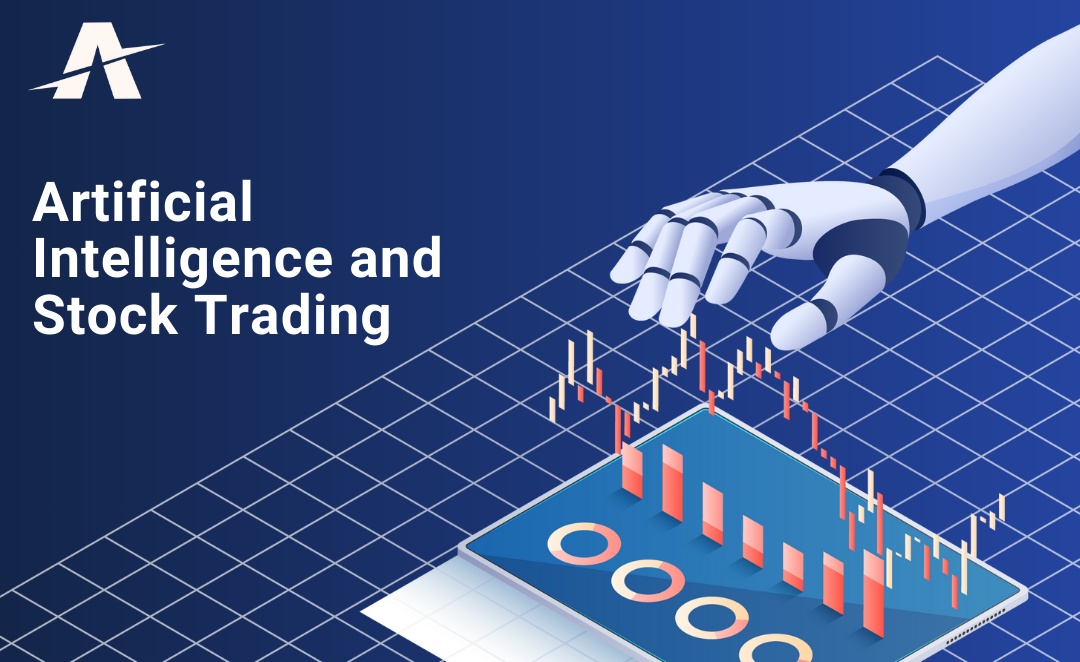20 Free Facts For Picking AI Stock {Investing|Trading|Prediction|Analysis) Websites
Top 10 Tips On How To Assess The Quality Of Data And The Sources For Ai-Powered Stock Analysis/Predicting Trading PlatformsTo ensure accurate and reliable insights, it is essential to evaluate the quality of the data sources and AI-driven platforms for trading stocks. A poor quality of data could result in inaccurate predictions and financial losses. This can lead to suspicion about the platform. Here are 10 ways to judge the quality of data and the source:
1. Verify the data sources
Verify the source of data. Check to see if the platform is using trusted and reliable providers of data, like Bloomberg, Reuters or Morningstar.
Transparency. Platforms must provide their data sources in a clear manner and regularly updated.
Avoid dependence on a single source: Trustworthy platforms aggregate information from multiple sources to eliminate biases and mistakes.
2. Assess Data Freshness
Real-time data vs. delayed data: Decide whether the platform is providing real-time data or delayed data. Real-time trading requires real-time data, whereas delayed data will suffice in long-term analysis.
Update frequency: Check if the data is updated.
Accuracy of historical data - Check that the historical records are uniform and free of gaps or anomalies.
3. Evaluate Data Completeness
Look for data that is missing. Check for any gaps in the historical data, missing tickers and incomplete financial statements.
Coverage: Ensure the platform is able to cover a broad selection of stocks, indices and other markets that will be pertinent to your trading strategy.
Corporate actions: Check if your platform takes into account stock splits and dividends in addition to mergers and other corporate actions.
4. Test Data Accuracy
Cross-verify data : Check the platform data with that of other reliable sources to ensure the accuracy.
Error detection: Search for outliers, incorrect price points or financial metrics.
Backtesting. You can test strategies using historical data and compare the results with what you would expect.
5. Consider the Data Granularity
Detail - Make sure you can get granular details such as intraday volumes, prices, bid/ask spreads, and the order book.
Financial metrics: Check if your platform offers detailed financial reports (income statement and balance sheet) as well crucial ratios, such as P/E/P/B/ROE. ).
6. Check for Data Cleaning & Preprocessing
Data normalization: Ensure the platform normalizes data (e.g. making adjustments for splits, dividends) to ensure consistency.
Outlier handling: See how the platform deals with outliers or anomalies within the data.
Missing data imputation - Check that the platform is using reliable methods to fill out the data gaps.
7. Check the data's consistency
Timezone alignment - Ensure that all data are aligned with the same local time zone in order to avoid discrepancies.
Format consistency: Ensure that data is presented in a consistent format.
Cross-market consistency : Check data harmonization across different exchanges or markets.
8. Determine the relevancy of data
Relevance of your trading strategy. Ensure that the data corresponds to your style of trading.
Features selection: See whether the platform offers relevant features (e.g., sentiment analysis, macroeconomic indicators and news data) that enhance the accuracy of predictions.
Review Data Security Integrity
Data encryption: Make sure the platform has encryption in place to protect the data while it is being transmitted and stored.
Tamper-proofing : Ensure that the data hasn't been manipulated by the platform.
Compliance: Find out whether the platform is in compliance with the regulations on data protection.
10. Test the platform's AI model transparency
Explainability. You must comprehend how the AI uses data to create predictions.
Bias detection - Check to determine if your system is actively monitoring data and models for biases.
Performance metrics: Examine the track record of the platform and performance metrics (e.g., accuracy and precision, recall) to assess the reliability of its predictions.
Bonus Tips
Reputation and reviews from users User reviews and feedback to determine the platform's reliability and data quality.
Trial period. Try the trial for free to test the features and quality of data of your platform before you decide to purchase.
Customer Support: Ensure that the platform provides an effective support system that allows customers to address issues related to data.
Use these guidelines to evaluate the source of data and the quality of AI platform for stock predictions. Make informed decisions about trading by using this information. Check out the top rated full article on ai investing for more advice including invest ai, ai trade, copyright advisor, canadian ai stocks, trade ai, ai stock market, ai stock market, trader ai, ai trading tools, trading ai and more.

Top 10 Tips To Evaluate The Speed And Latency Of Ai Platform For Analyzing And Stock Predicting
Speed and latency are crucial aspects to consider when evaluating AI stock prediction and analysis platforms, particularly for algorithmic traders, active traders and high-frequency traders. A delay of just milliseconds can have a negative impact on the execution of trades. Here are the 10 best ways to measure the speed of your platform.
1. Assess Real-Time Data Feeds
Data delivery speed: Ensure that the platform is able to deliver real-time information with minimal delay (e.g. less than a millisecond delay).
Find out the distance of the source to the major exchanges.
Data compression: Find out if your platform utilizes effective data compression techniques in order to accelerate the delivery of data.
2. Test the speed of execution for trades
Processing speed of orders How fast the platform executes and processes trades once you've submitted an order.
Direct market access (DMA) Make sure that the exchange platform provides DMA, which allows orders to be made directly to the exchange without intermediaries.
Execution reports: Check whether the platform has comprehensive execution reports, such as timestamps for order submission, confirmation, and fill.
3. Assess Platform Responsiveness
User interface speed (UI): Measure how fast the platform's user interface responds to your inputs.
Chart updates Check to see if the charts and visuals are updated in real time with no lag.
Performance of mobile applications If you're using a mobile application, ensure that it runs as fast as the desktop version.
4. Look for infrastructure that is low-latency.
Server locations The platform must use high-speed, low-latency servers which are situated near major exchanges or financial hubs.
Co-location service: Discover whether your platform has this option. This lets you host trading algorithm on servers near the exchange.
High-speed networks - Make sure that the platform is using fiber-optic high-speed networks, or other low-latency methods.
5. Assess backtesting and simulation speed
Historical data processing: Check how fast your platform processes and processes historical data.
Simulation latency: Make sure that the platform is able to simulate trades in real-time with no any noticeable delays.
Parallel processing: Find out whether the platform makes use of parallel processing or distributed computation to speed up calculations.
6. Calculate the API Latency
API response times: Find out how quickly APIs respond to queries (e.g. getting information from the platform, putting in orders).
Rate limits: Determine that the API has acceptable rate limits to avoid delay during high-frequency trading.
WebSocket support: Check if the platform uses WebSocket protocols to support real-time, low-latency data streaming.
7. Test Platform Stability and Stability under Load
Simulate scenarios of high-volume trading to determine whether the platform is stable and responsive.
Market volatility: Test the platform during periods of high market volatility to make sure it can handle rapid price changes.
Test for stress: Check if your platform provides methods for stress testing strategies in extreme circumstances.
8. Examine network and connectivity
Internet speed requirements: Make sure your internet connection has the speed recommended by your internet provider to ensure the best performance.
Connections that are redundant: Make sure you know if your platform has redundant internet connections. This will help you prevent interruptions.
VPN latency. If you are using the VPN be sure to check whether it creates significant latency.
9. Make sure to check for speed enhancement features
Pre-trade Analytics: Make sure the platform has pre-trade analytics to improve the routing of orders, execution speed and other factors.
Smart order route (SOR) The first step is to see if SOR is being used by the platform in order to identify the most efficient and most cost-effective execution options.
Monitoring latency: Check that the platform offers tools for monitoring and analyzing latency in real-time.
Review User Feedback & Benchmarks
User reviews: Read user feedback to assess the platform’s speed and latency performance.
Benchmarks from third-party sources: Search for independent benchmarks and reviews which compare the performance of the platform to those of its competitors.
Case studies: Contact the platform to see whether it has case studies or testimonials that show its low latency capabilities.
Bonus Tips:
Trial period: Test out an unpaid test or demo of the platform to check out how it performs in real scenarios.
Customer support: Check to find out if the platform offers assistance with issues related to latency or for optimization.
Hardware requirements. Make sure the platform is compatible with the hardware you are using for example, high-performance computers.
The following tips can help you assess the speed of AI trading platforms that forecast or analyze the prices of stocks. It will allow you to choose a trading platform which best suits your trading requirements and minimizes delays. Low latency can be crucial for high-frequency or algorithmic traders where even small delays can affect their profitability. Take a look at the top free ai tool for stock market india for blog info including ai investment app, free ai tool for stock market india, trader ai review, incite, chart analysis ai, ai investing app, trade ai, incite ai, ai stock picks, trader ai app and more.
